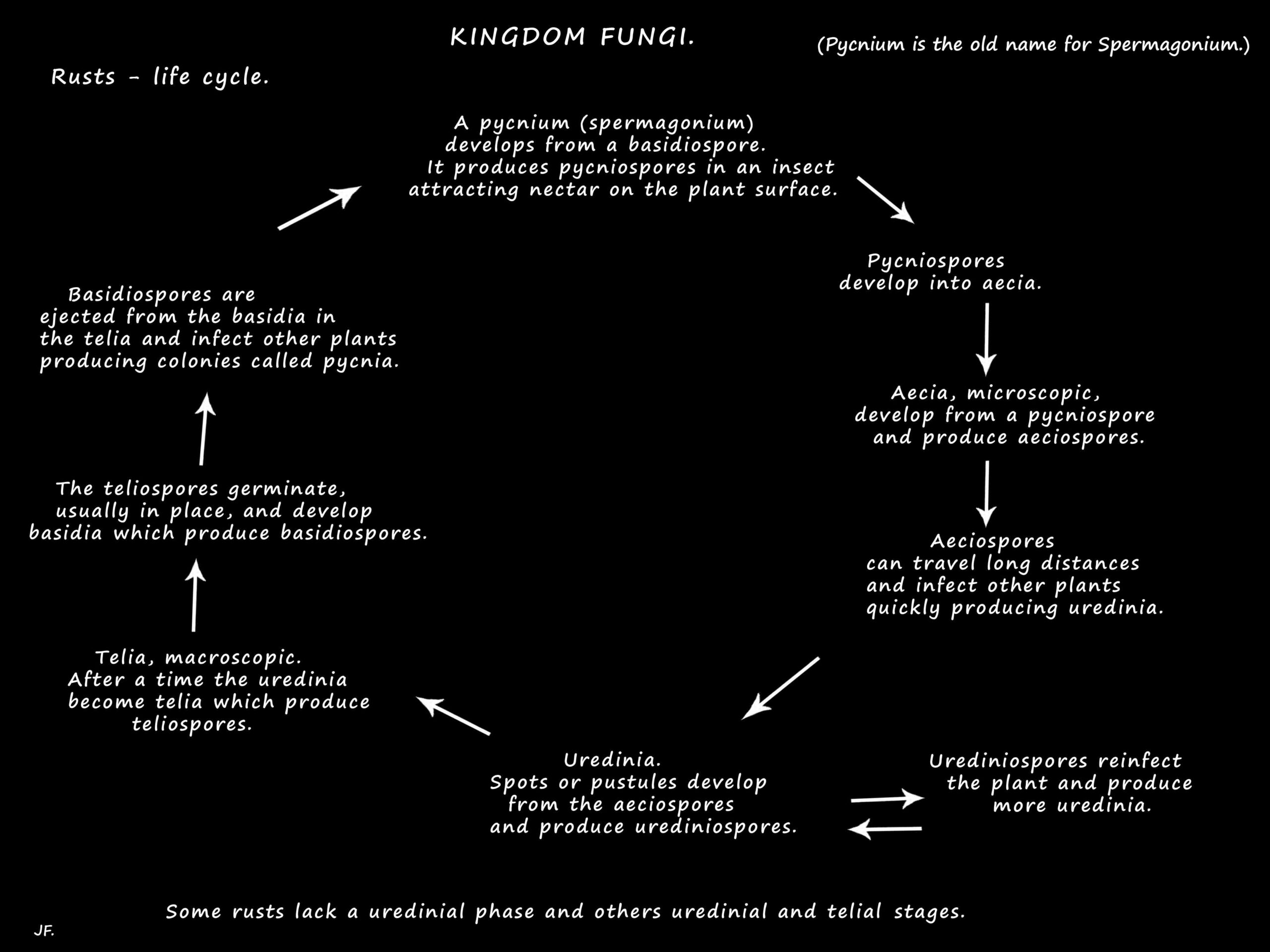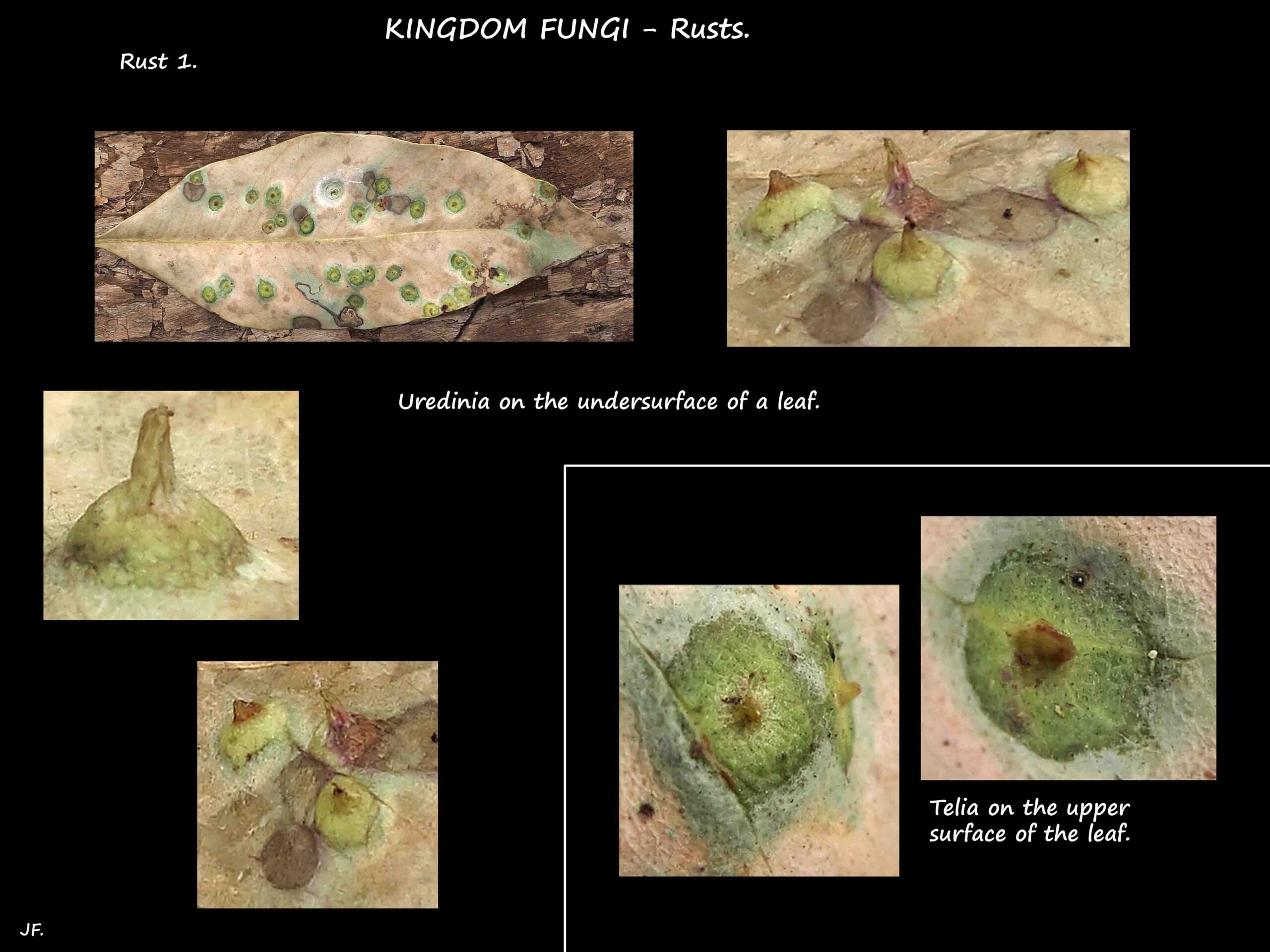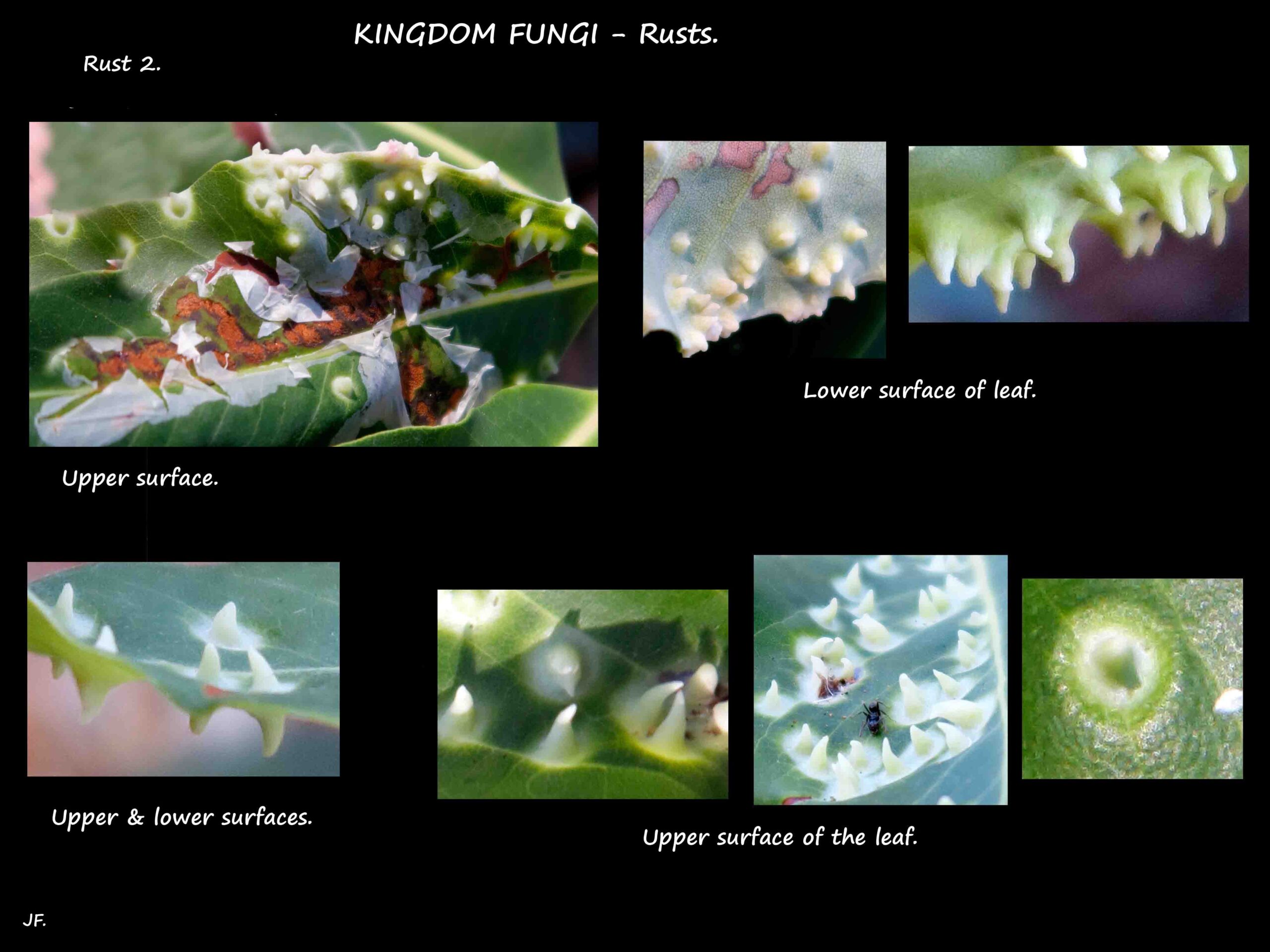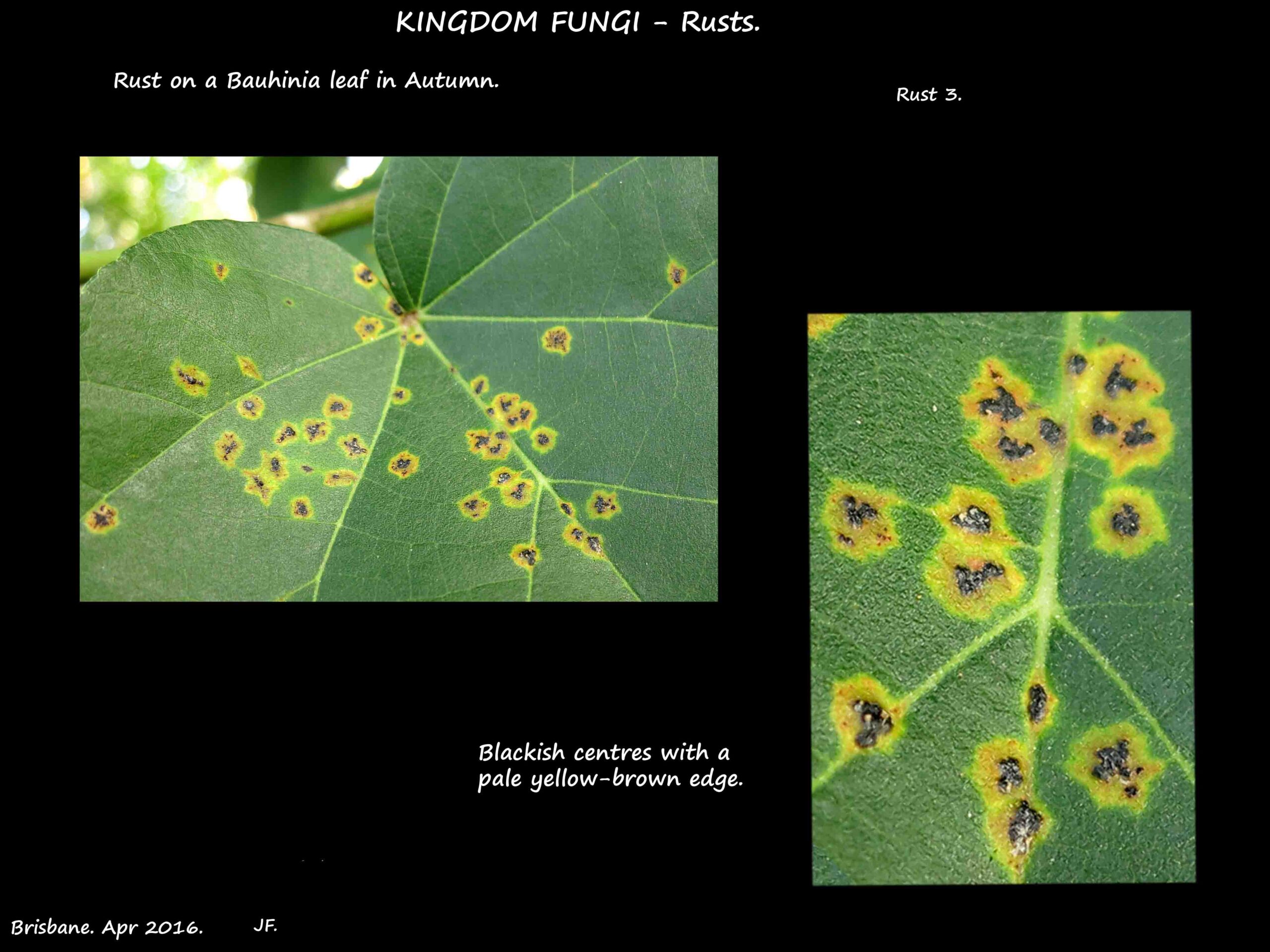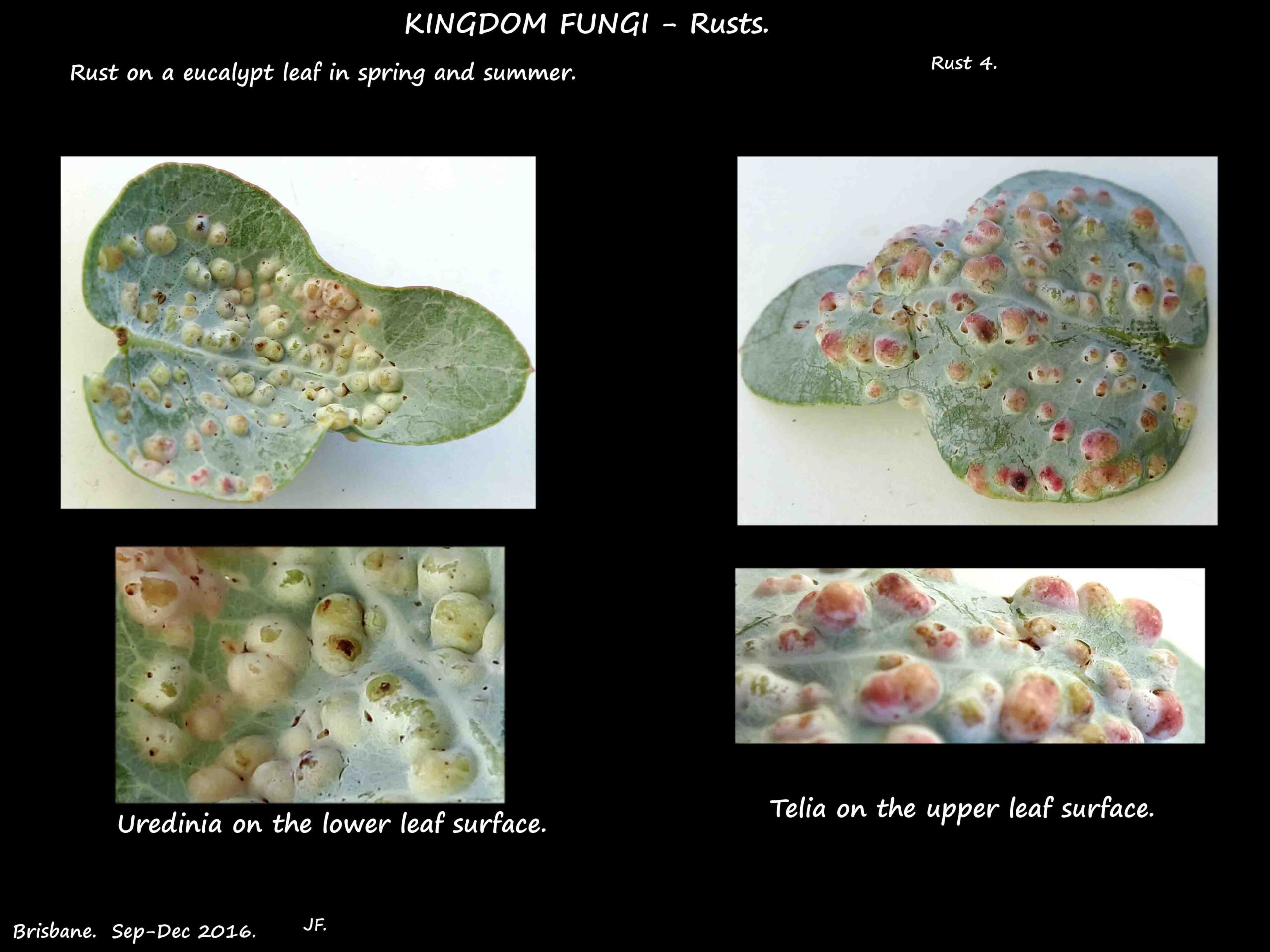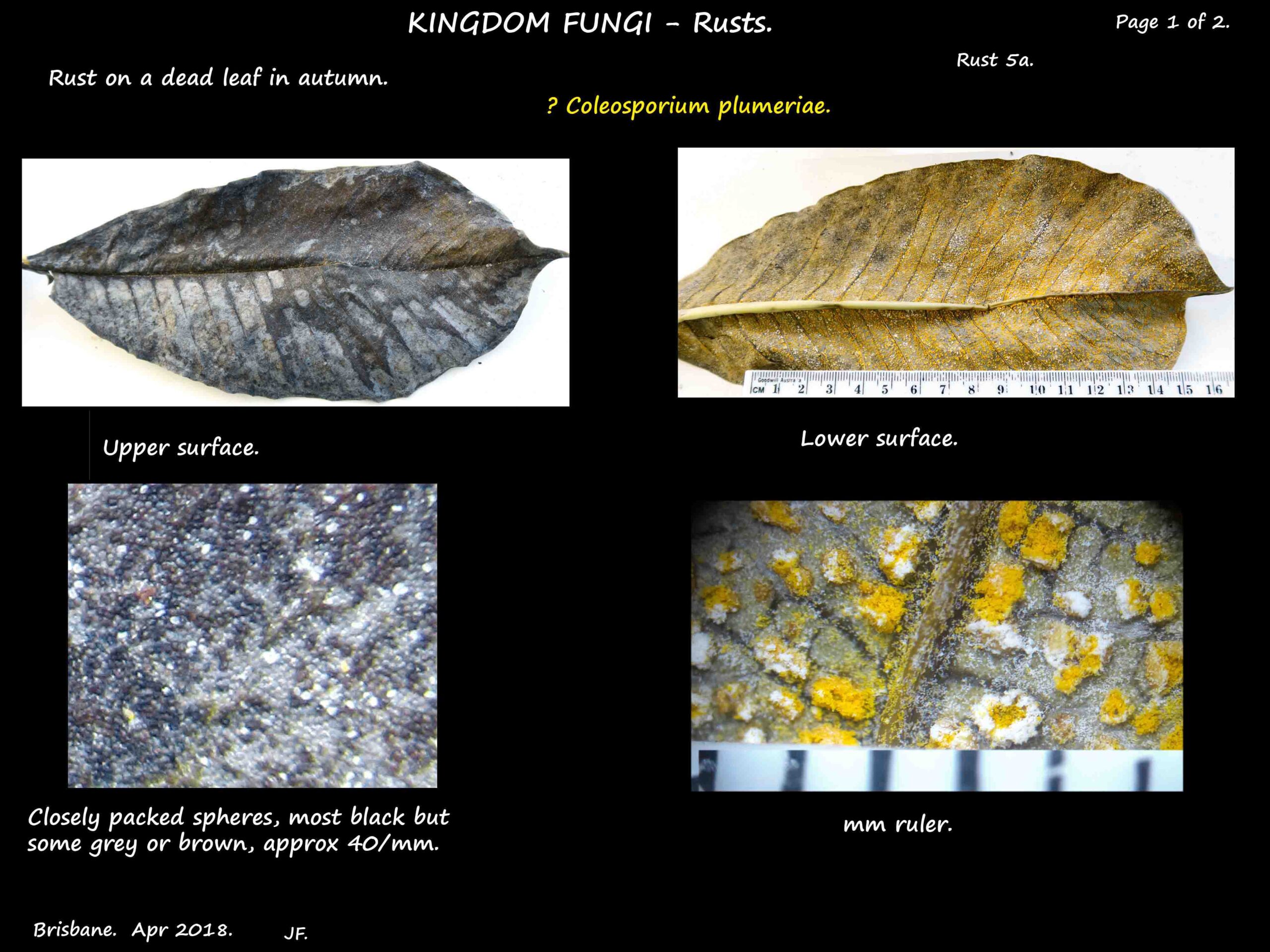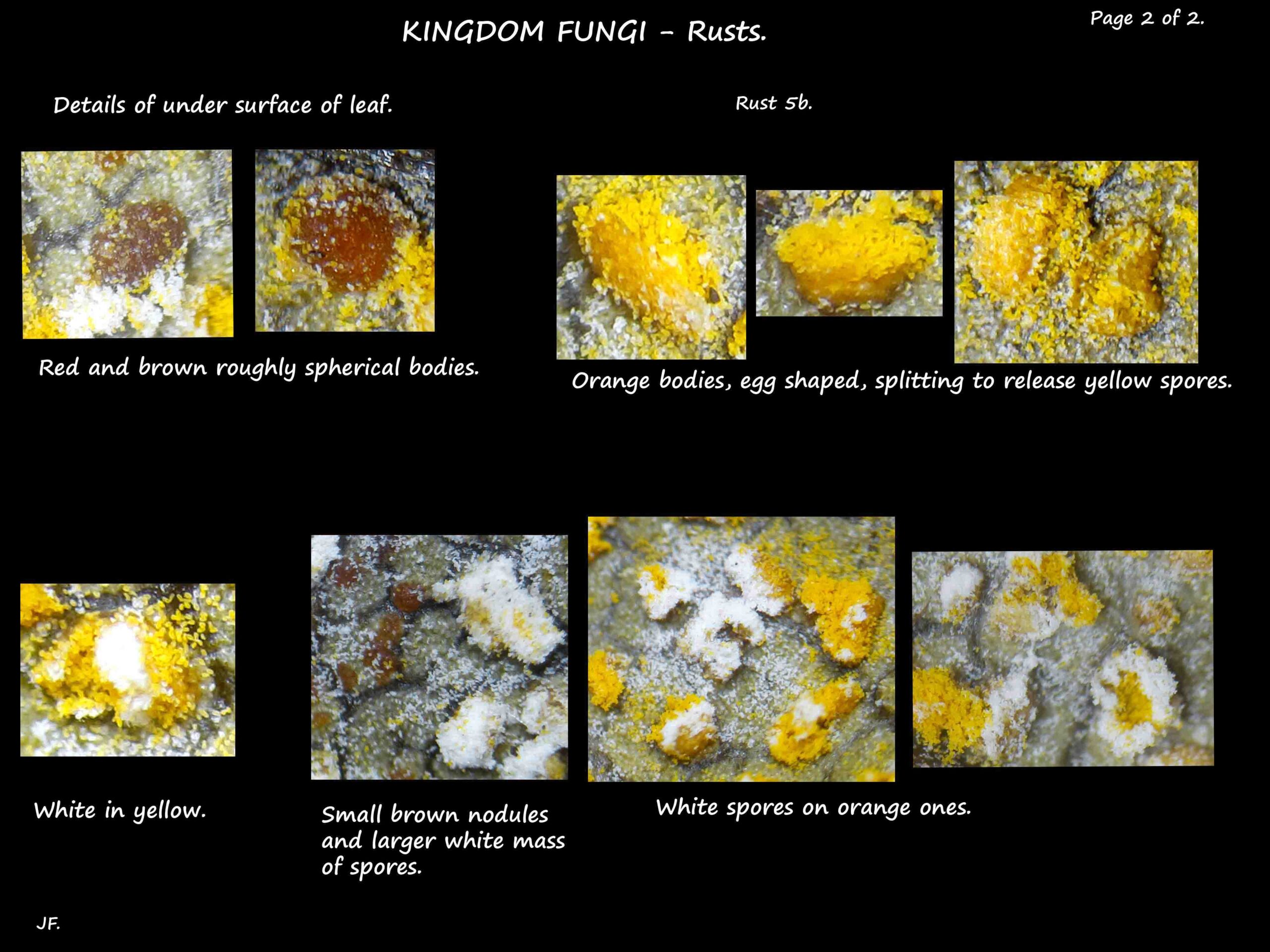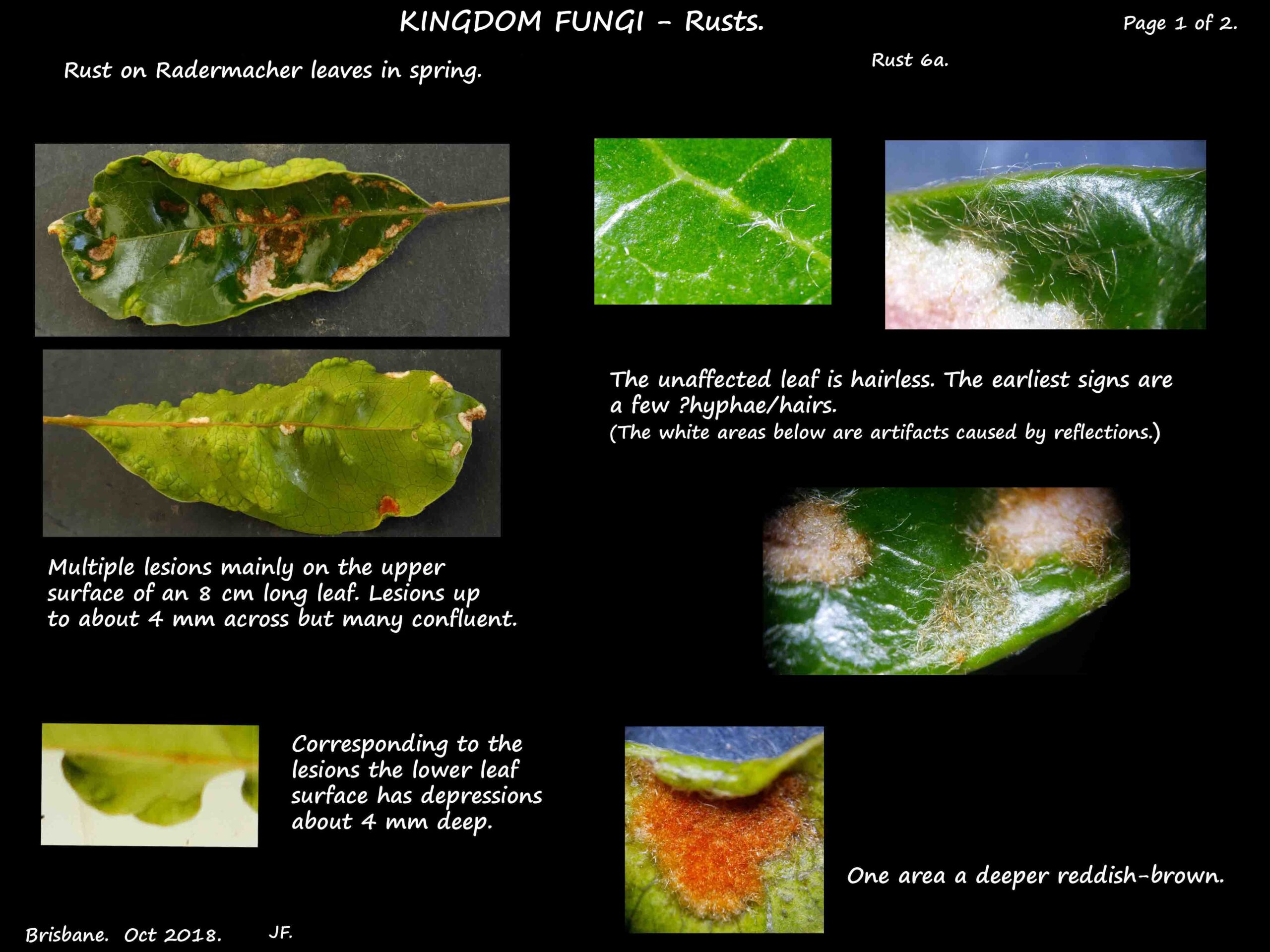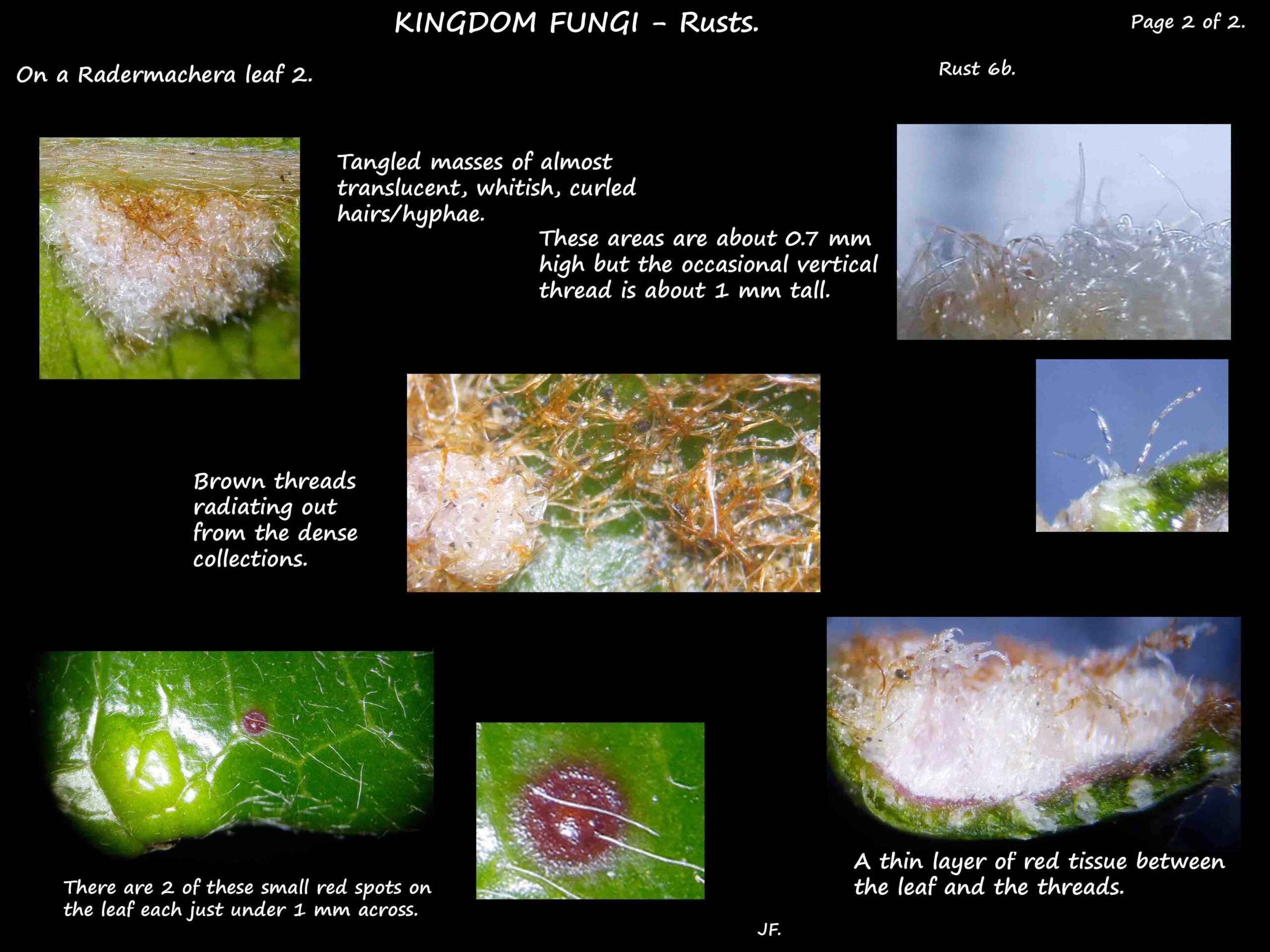Rusts.
Basidiomycota > Subphylum Pucciniomycotina > Order Pucciniales (was Uredinales).
Rusts are plant parasites that require a living host to complete their life cycle.
There are said to be over 7000 species.
The name comes from the powdery yellow or rust-coloured coating seen on vegetation caused by masses of spores.
Many are plant specific and are often named after the plant they attack although some attack a variety of plants.
They usually affect healthy plants and stunt their growth rather than kill them.
They can infect tender young stems, leaves, fruit or seeds and have specialised structures that allow the rust spores
to penetrate the host cells from which they obtain nutrients.
Many of the most important plant diseases are caused by rusts such as stem rust of wheat or coffee rusts.
Rusts have complex life cycles which may include up to 5 different types of spores and involve 2 different host plants
(the primary and alternative hosts).
This makes it very difficult to identify some rusts.
Life cycle of rusts.
Spermogonium — the Spring stage.
Spermogonia, derived from basidiospores, are fruiting bodies found, for example here, on the upper surface of leaves. Host 1.
They are flask-like structures which produce either sexual spores or special receptive hyphae, each mixed with a sweet smelling nectar.
Escaping through small openings in the tops of the flasks the nectar attracts flies and other insects that transport the spores
or hyphae to other spermagonia.
When spermagonia and receptive hyphae of different mating strains fuse they form aecia. Insect vector.
Aecium.
A new mycelium grows through the leaf and produces an aecium on the under surface.
This is a microscopic sac or cup-like structure that produces vegetative aeciospores which are dispersed by the wind.
Aeciospores, landing on an appropriate host, form a new mycelium – the uredinium.
Uredinia.
These are pustule-like fruiting bodies consisting of masses of hyphae and spores. Host 2.
They can occur on either leaf surface but are commonly seen on the underside.
They can be round or linear, scattered, in rings or so profuse they cover the whole surface of the leaf.
They are usually yellow or yellowish-brown.
They produce masses of vegetative urediniospores which infect other leaves and plants which in turn produce more urediniospores.
At the end of the season the uredinia cease production of urediniospores and, in producing teliospores instead, they become telia.
The teliospores are the resting winter stage of the rust.
Telia.
These can appear on the upper leaf surface above the uredinia as darker coloured spots a few mms in diameter.
They can also be seen surrounding uredinia.
They can be a bright yellow with a pale margin, dark purple with grey centres or pale margins, yellowish-brown or reddish brown.
Individual spots are 2 to 4 mm but they can form patches up to 1 cm across.
As they enlarge they become pustule-like and eventually break through the leaf surface to release the yellowish brown to reddish brown teliospores.
Basidium.
Teliospores released in the spring undergo meiosis and, finding the correct host, germinate to form a new mycelium or basidium.
This produces basidiospores which disperse to form new spermagonia and the cycle starts again.
J.F.
